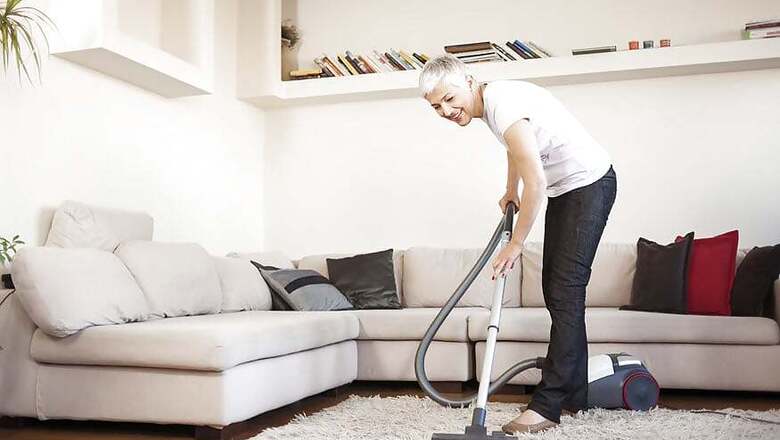
views
New US research has found that even small daily activities such as folding the laundry or doing the dishes may help to reduce the risk of death in women.
Carried out by the University at Buffalo, the study looked at 6,382 older white, African-American and Hispanic women age 63 to 99.
Unlike the majority of previous studies, which have looked at the effect of physical activity health using questionnaires, the team asked participants to wear an accelerometer for between four and seven days.
The motion-sensing devices electronically record daily movement patterns and intensity, allowing researchers to measure levels of activity
For this study, light physical activities included everyday tasks such as folding clothes, sweeping the floor or washing the windows, which account for more than 55 percent of how older people spend their daily activity.
Moderate to vigorous activities included brisk walking or bicycling at a leisurely pace.
After taking into account factors such as age, race-ethnicity, education, smoking, alcohol, and self-rated health, the results showed that women who engaged in 30 minutes per day of light physical activity had a 12 percent lower risk of death than those who were sedentary.
Women who were able to do a half-hour each day of moderate to vigorous activity had a 39 percent lower risk of death.
"This is remarkable because current public health guidelines require that physical activity be of at least moderate or higher intensity to confer health benefits," commented the study's lead author Michael LaMonte.
"Our study shows, for the first time in older women, that health is benefited even at physical activity levels below the guideline recommendations."
Although the study looked specifically at older women, the team said that their findings can still send the important message to younger women and men that setting healthy habits and being physically active while young can help maintain these habits, and good health, as we age.
LaMonte added that by 2050, the number of those aged 65 and older is expected to have doubled since 2000, reaching nearly 77 million.
Women in this age group are also expected to outnumber men 2-to-1.
"Our results suggest that the health benefits of lighter activity could reach a large swath of women in an aging society," LaMonte said.
"Doing something is better than nothing, even when at lower-than-guideline recommended levels of physical activity," he added.
The findings can be found published online in the Journal of the American Geriatrics Society.




















Comments
0 comment